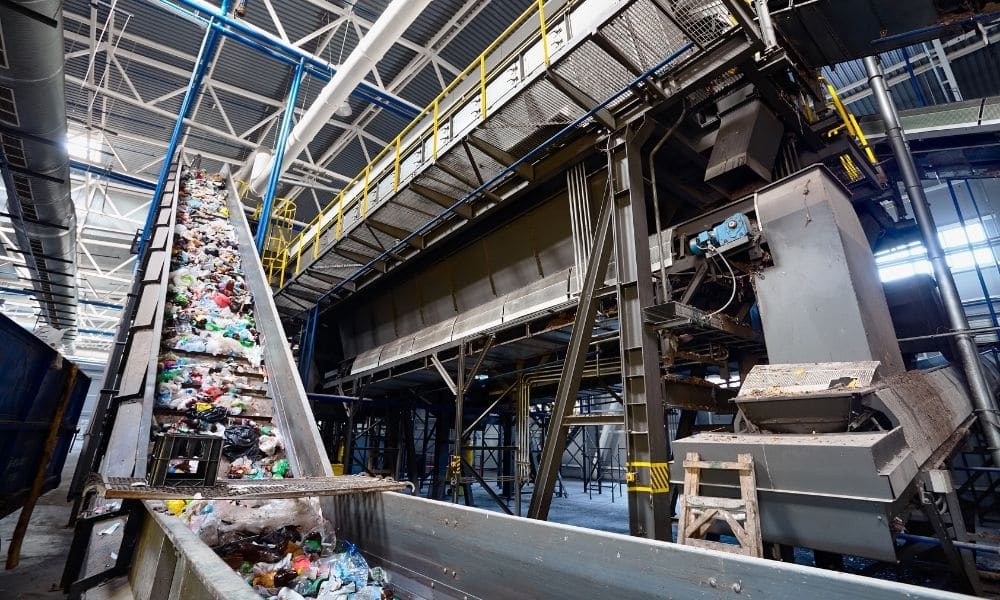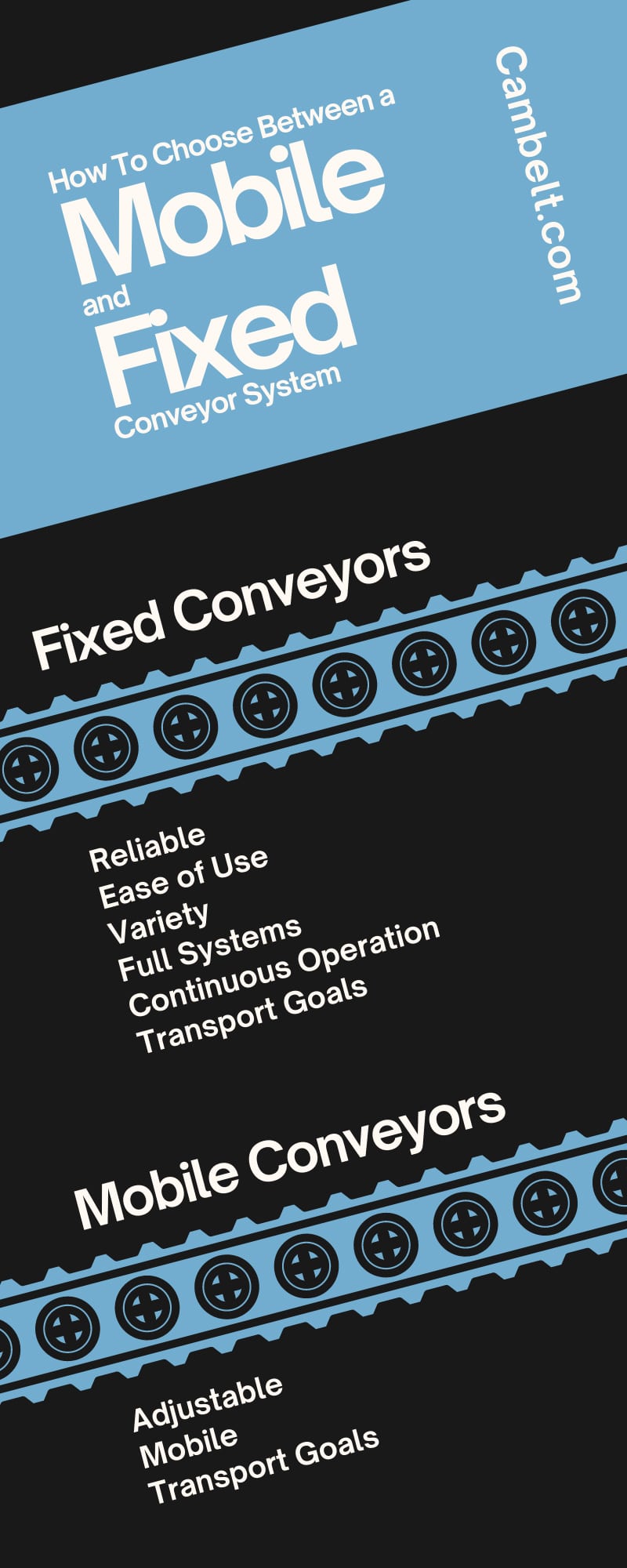
There’s a lot of decisions you can make about your conveyor systems that can massively improve your efficiency and productivity. One of the first major decisions requires you to learn how to choose between a mobile and fixed conveyor system. This is important, as choosing the right type of system for the job can save you money and increase your potential profits.
Fixed Conveyors
Fixed conveyor systems are what most people imagine when they think of conveyor systems, a mounted system that automatically moves items along a set path. However, there are dozens of factors that go into choosing a fixed conveyor system and many benefits that come with picking one for your system.
Reliable
The first thing you should know about these systems is their reliability in comparison with other systems. Fixed conveyors always perform at the same level because the conditions around them don’t change. This makes them perfect for processing the same materials over an extended period of time.
Ease of Use
Another benefit of mounted conveyors is that they require very little attention from workers, requiring only frequent inspections and preventative maintenance. This differs from mobile conveyors that only move with the help of workers at the beginning and end of each new operation.
Variety
Conveyor systems come in all varieties and types, from overhead hanging conveyor systems to enclosed conveyor belts. This means you can easily build a system that fits your exact needs conveying your materials and items as efficiently as possible.
Full Systems
One of the biggest benefits fixed systems have is the fact that they’re usually full systems that stretch the entire length of your production. While you can get mobile systems for production, fixed conveyors are usually more useful and efficient for processing and moving lots of materials throughout the entirety of processing.
Continuous Operation
Unlike mobile conveyors, fixed systems can work endlessly, barring breakdowns, moving your products without stopping. Since there’s no setup for a good fixed conveyor, you can have an unbroken flow of material through your worksite. On the flip side, mobile conveyors need setup for each job and need worker input for proper functions.
Transport Goals
One thing that should heavily influence your decision on which system is the best for you is the intended outcome of each fixed conveyor system. Namely, fixed systems are for moving a continuous flow of materials and items through your production and storage. They work best when you have a constant influx of materials and are less cost-efficient for short runs because of the large cost of installation.
Mobile Conveyors
Mobile conveyors are smaller systems workers move from job to job. They typically involve a single conveyor belt or mechanism that moves a limited number of items to another spot. Most often, these are useful for loading and unloading materials, but they have a variety of other uses depending on your needs.
Adjustable
There are many benefits from owning a mobile conveyor system, such as tackling a variety of odd tasks or problems. Each system is capable of handling a multitude of jobs and doesn’t require the same specifics as a fixed system. This makes them great for problem solving or tackling projects with a lot of variances.
Mobile
Although it’s in the name, the mobility of this conveyor system is a major benefit worth talking about. Because the system is mobile, it excels in places where you need multiple systems. Instead of building multiple fixed systems, a single mobile system can move items short distances. This makes them great for unloading and transferring goods from vehicles or drop-off locations.
Transport Goals
Like the fixed system, mobile conveyors are more effective when you use them for the purpose they excel at. Namely, the purpose of mobile conveyors is the short-term conveyance of materials and goods across small spaces. This makes mobile conveyors extremely useful for loading and unloading purposes along with other temporary moving processes, but not as effective for long-lasting jobs.
Material Considerations
Lastly, when learning how to choose between a mobile and fixed conveyor system, you should look at the materials you’re planning on moving. Different materials have vastly different requirements and can need unique features for efficient transport. Picking your system based on your materials is smart, and these are just a few of the features you should consider for your systems.
Volume
One of the features you should consider is the volume of goods your system will transport. Mobile conveyors are useful for shorter periods of time, while fixed conveyors are good for extended work. However, both are capable of handling various load sizes as long as you plan for your volume before you invest in your system.
Rate
The rate of flow and production is very important for conveyor systems, as the conveyor must match the flow of items. If the rate doesn’t match your conveyor systems, you’ll create bottlenecks in your processing system which slow down efficiency and can even damage products and equipment. Mobile conveyors also have the concern of setup time, as they need time and crews that’ll move and operate the conveyor.
Material Needs
Every material has a variety of needs that an efficient conveyor system will address when operating properly. This can include things like:
- Weight
- Size
- Hazards (sharp edges, spikes)
- State of matter (liquid or solid)
- Container (box, jar, or loose material)
- Temperature
- Fragility
There are other concerns than what’s on this list, like sticky materials, but these are the major categories every conveyor should address for the materials they carry. Luckily, good belt conveyor systems manufacturers are more than capable of creating systems that fit your exact needs. Whether it’s a fixed system or a mobile one, you can find a system that will efficiently operate in conveying your materials.
This is all very important knowledge for building and constructing a conveyor system that fits in your workspace. Hopefully, our detailed guide has provided you with enough information on whether you should choose a mobile system or a fixed system and what each system specializes in. By properly learning about all the factors, you can best invest your money in systems that raise efficiency and promote productivity.

